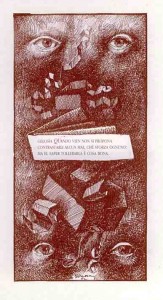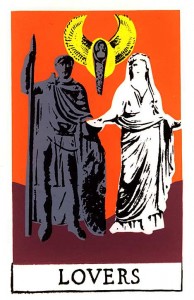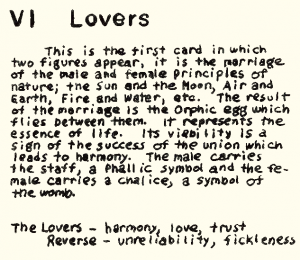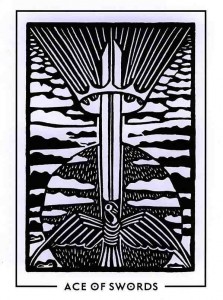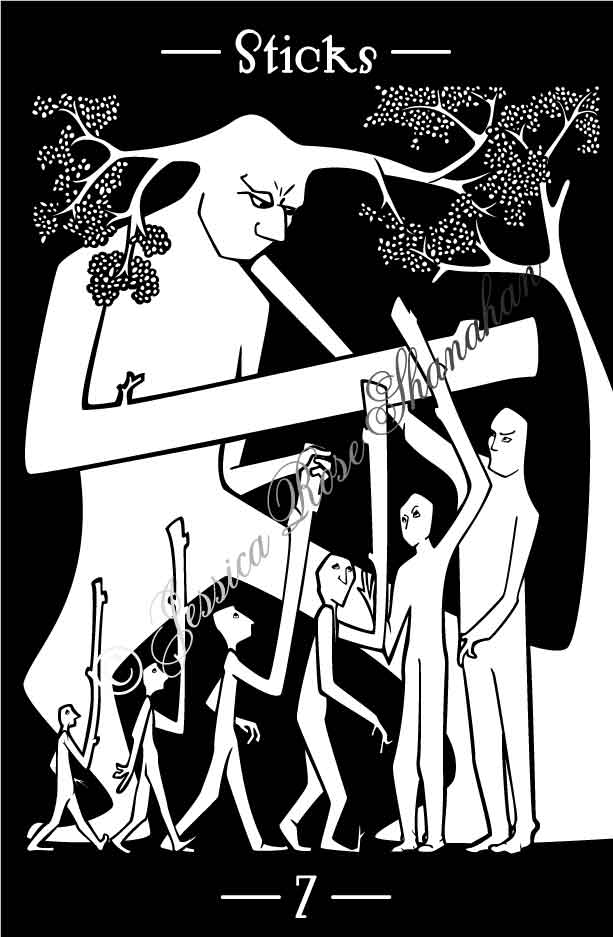 Aritist: Jessica Rose Shanahan
Aritist: Jessica Rose Shanahan
Strong stance: challenge • competition • perseverance
Seven of Sticks indicates a struggle after initial satisfaction. The struggle is about maintaining a position at the top while others compete for the same success and status. Competition is rife. Challenging obstacles that appear to block the path forward can be overcome with effort and clarity of purpose.
Those with public acclaim must expect competition and challenge. The Seven of Sticks does not win everyone over, but takes a stand to hold its ground with determination and courage. This requires self-confidence, strength and determination. There will always be opposition. This is not a card about compromise or negotiation.
Weak stance: giving up • overwhelmed • overly defensive
The reversed Seven of Sticks is overwhelmed by challenge, responsibility, and a multitude of commitments. It is at risk of falling behind and being caught unprepared. Focus on one or two things and be confident in the ability to do them well. Constantly comparing one’s self to others or feeling one is constantly being judged and criticized is exhausting and inevitably leaves one with a sense of inadequacy.
Sometimes, the reversed Seven of Sticks tries to avoid conflict wherever possible, backing down too easily. In this case, being accepted and liked by others is more important than fighting for one’s beliefs. It is time to let go of struggle and move on. Of course, there is the opposite extreme, when the reversed Seven of Sticks becomes overly aggressive about protecting its turf to the detriment of personal relationships. There needs to be balance.




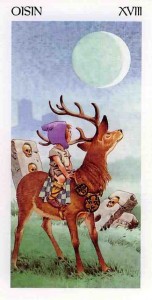
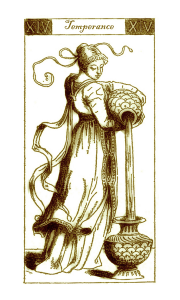
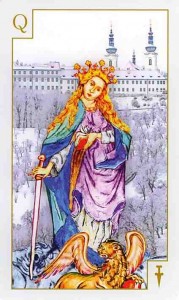
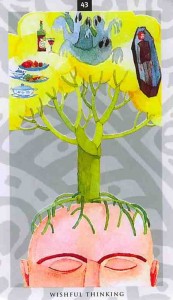
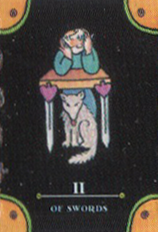
 Artist: Jessica Rose Shanahan
Artist: Jessica Rose Shanahan